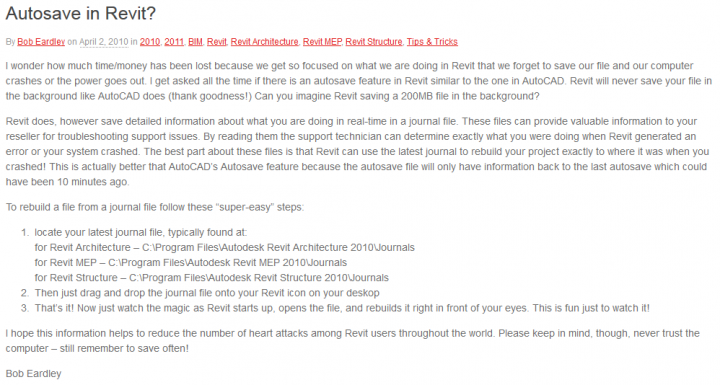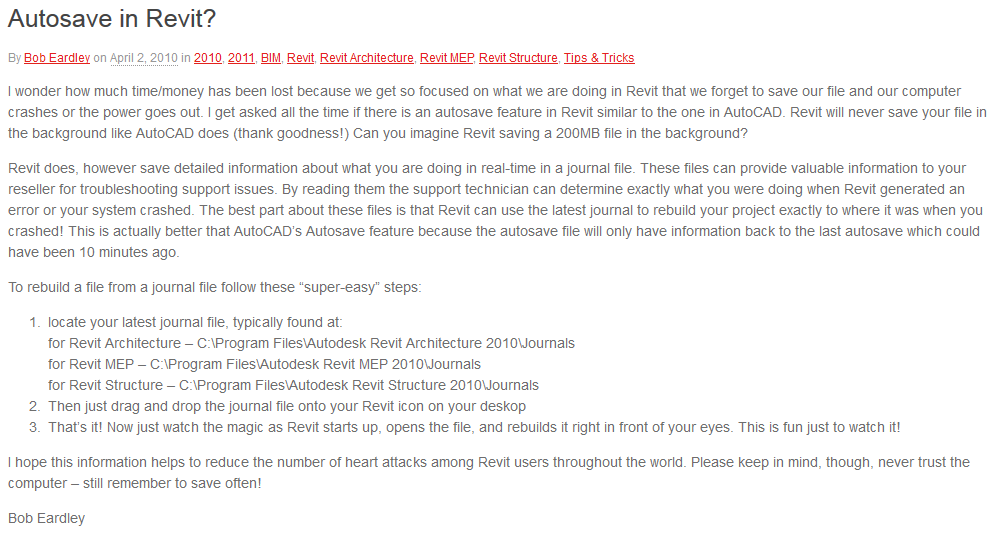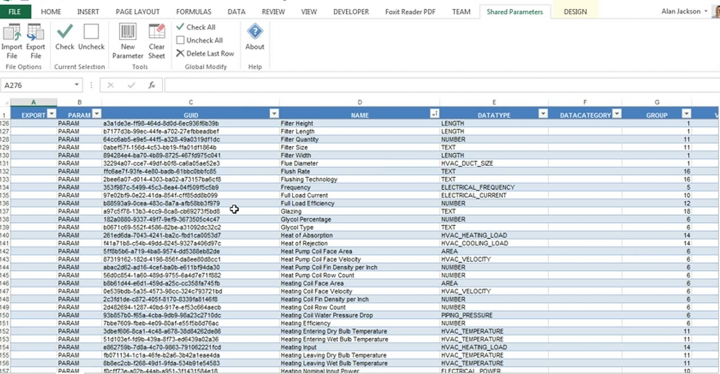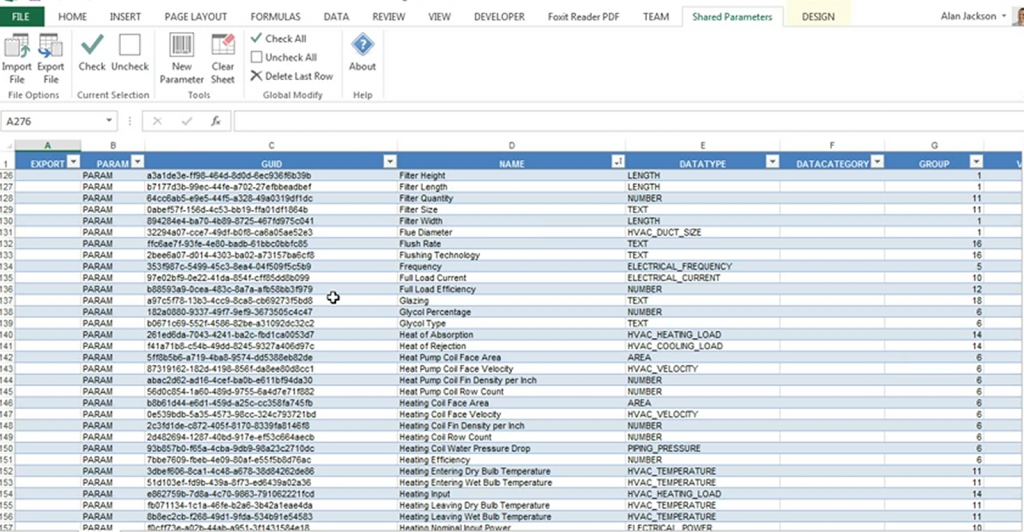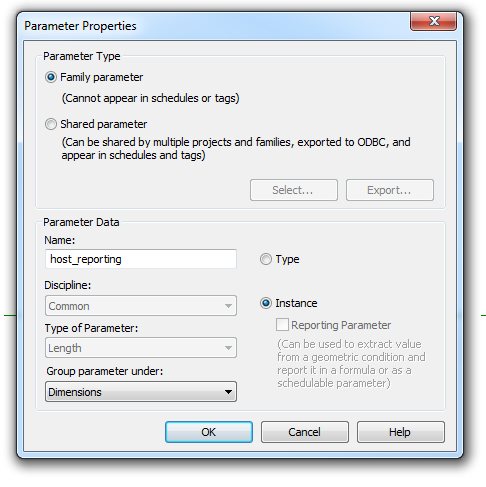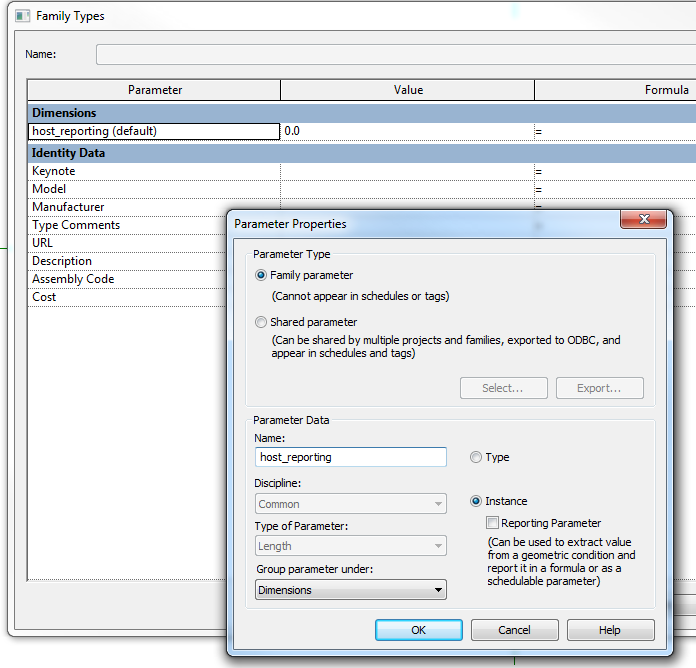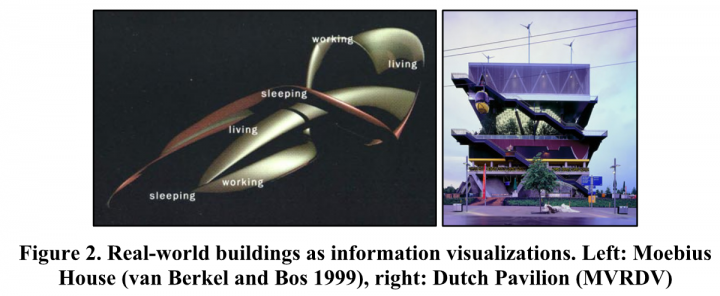Redirect checker:
http://www.internetofficer.com/seo-tool/redirect-check/
Downloads:
Revit Add-In 2014
Revit Add-In 2015
SP.Writer Excel Tool
Intro video (2014 version):
Heads-up https://twitter.com/bim_source/status/463673207229538304
Useful comments over at this post
Shared Parameter Management 2014 – BIM Source
Mobile app list and links (it gives you a quick idea of which apps are only available on Ipad vs Android):
See them at:
Autodesk Mobile Apps – Autodesk Software – Advanced Solutions
Let’s say you have a nested family with a formula driven parameter, something like =Length/10. You want to expose this to a host family and make it a Reporting Parameter, but that option seems to be grayed out (firstly, because its formula driven, secondly because its a nested family):
Here’s what to do:
- Remove the formula from the nested family and reload it (so you can now apply a parameter to it in the host)
- Add an instance parameter as per the image above
- Close this dialog by clicking OK
- Go to the Family Types dialog
- Select and Modify that parameter
- Now you can tick the Reporting box
- Edit the nested family again – reinstate the formula
- Reload the family
- You now have a Reporting parameter in the host family that tells you the value of a nested, formula driven parameter
Another workaround that may assist with reporting parameter restrictions is to:
- Save the family and close it
- Rename with extension .rft
- Make a new family based on this “template”
- Maybe the problems you were having with Reporting parameter restrictions are gone, but you might have mixed results
Well, that’s not really a person. But Andrew Vande Moere is, and he wrote a paper about this back in 2005:
Form Follows Data
The Symbiosis between Design & Information Visualization
You can download it at this link.
or Google Web Cache
Check your Autodesk Application Manager:
Revit 2015 will now read “Update Release 2” in the About box:
Readme:
http://download.autodesk.com/SWDLDDLM/Updates/2015/RVT/Revit_2015_Update_2_Readme.htm
Direct download link for Revit 2015 Update 2:
http://download.autodesk.com/SWDLDDLM/Updates/2015/RVT/Autodesk_Revit_2015-x64_Update2.exe
Nice post over at Enjoy Revit, showing how you can use an adaptive component to model Roof Tiles on a cone shaped roof.
Read the whole post:
Enjoy Revit: Roof Tile for Cone Roof
Downloads:
Quotes:
Modelling (BIM) to drive more efficient design, site management,
construction methods, and asset management”, said Ms Scott.
arrangements, offering opportunities to avoid design clashes and reduce
variations during project delivery.”
“The Australian construction industry has, presently, a fragmented
approach to BIM, and to the use of supply chains. There are significant
benefits to be had for clients of the industry
as buyer in Australia could spur on the productivity gains to be had
from both, by normalising the market by encouraging the use of BIM, and
requiring contractors to nominate
Read more:

